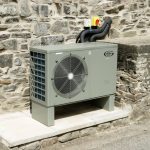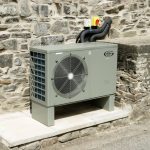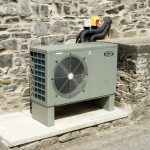The government has set out plans to offer £5,000 grants to help 90,000 households install home heat pumps, and other low-carbon heating systems, over the next three years as part of its plan to cut Britain’s reliance on fossil fuel heating.
As gas boilers are phased out, heat pump installations could reach up to 600,000 a year in the 2030s – but is Britain ready for a home heating revolution?
What is a heat pump?
In simple terms, an electric heat pump works like a reverse fridge, extracting warmth from the outside air, the ground or a nearby water source before concentrating the heat and transferring it indoors. They can usually be found outside a home, and they look like a standard air-conditioning unit.
Minister hints at gas boilers ban but says market should drive changeRead more
Why do we need heat pumps?
About 85% of UK homes use gas boilers for heating, making it one of the most polluting sectors of the economy. The fossil fuels used in our homes for heating, hot water and cooking make up more than a fifth of the UK’s carbon emissions, meaning low-carbon alternatives are critical if the UK hopes to meet its climate targets.
What does a heat pump cost?
Heat pumps carry a price tag often many times that of a gas boiler. They start at £6,000 for an air source pump, and at least £10,000 for a ground source pump. The price is expected to plummet in the coming years as more are installed. In the meantime, the government’s £5,000 grants should help to bridge the cost difference.
But there are still concerns about heat pump running costs, which in some cases can be 50% higher than a gas boiler because the cost of electricity includes carbon taxes and subsidies to support low-carbon energy projects. Green groups have called on the government to move these levies on to gas bills instead, which would make electricity cheaper and help to encourage homes and businesses to turn their backs on fossil fuels.
But do they work as well as a gas boiler?
A properly installed heat pump, which is the right size for the property, should keep indoor temperatures toasty. They are designed to keep indoor spaces at a steady temperature with gentle top-ups through the day, rather than ramping up quickly with a quick blast of fossil fuels like a traditional gas boiler. As a result, they are popular across Nordic countries where winter temperatures are far colder than in the UK.
£5,000 grants unveiled to support home heat pump installationRead more
Heat pumps work best in homes with properly insulated windows, walls and roofs. Using an accredited heat pump installer is a crucial step in getting the best advice to make sure your home does not leak too much heat, and has space for the right heat pump.
If you have plenty of outdoor space you could consider a ground source heat pump, which requires a 100m bore hole nearby. If space is tight an air source heat pump can sit directly outside a home, and should make only as much noise as a fridge. Both options require a cupboard for an indoor water heater.
What are the alternatives if I don’t want a heat pump?
The government is also making funds available to support other forms of low-carbon heating. Many of the companies responsible for producing and shipping fossil fuel gas are eager for the UK to adopt hydrogen as a replacement. Early trials and schemes are ongoing to test whether this can be done safely.
In the meantime, one of the fastest growing low-carbon options is district heating, which works well in cities where commercial properties and blocks of flats can be linked to the same communal heat network. In south-east London, Swedish utilities company Vattenfall plans to capture the heat from a waste-incineration plant in Bexley to warm up to 21,000 homes. Heat from nearby factories and even disused mine shafts and geothermal sources could all play a role, too.





